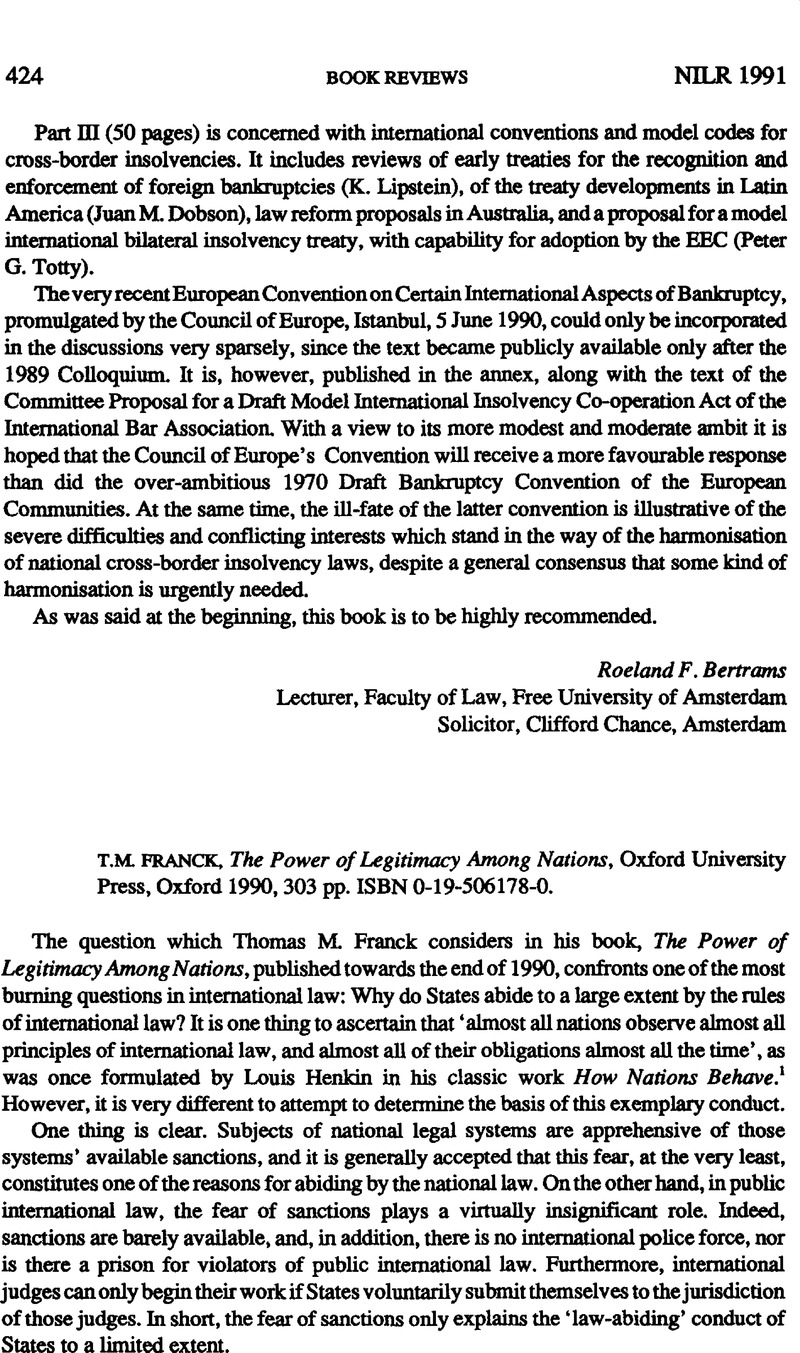No CrossRef data available.
Published online by Cambridge University Press: 21 May 2009

1. 2nd edn. (1979) p. 47.
2. Cf., the much used introduction of Akehurst, M., A Modern Introduction to International Law, 6th edn. (1987) p. 8Google Scholar.
3. Idem p. 10.
4. Théories et réalités en droit international public, 4th edn. (1970).
5. See in particular Dwarkin's Taking Rights Seriously (1977) and Law's Empire (1986). A useful survey is offered by Wintgens, L.J., ‘De rechtsfllosofie van Ronald Dworkin. Een kritische synthese’, Rechtskundig weekblad (03 02, 1991) pp. 897–905Google Scholar.
6. DeVisscher speaks of ‘les fins humains dupouvoir’. Others like Myres S. McDougal and W. Michael Reisman speak of ‘world public order’ and ‘human dignity’ (cf., for example, Reisman, W.M., ‘International Politics andInternational Law-Making – Reflections on the So-Called “Politicization” of the International Court’, in Heere, W.P., ed., International Law and its Sources. Liber Amicorum Maarten Bos (1989) pp. 77–92Google Scholar) and in The Concept of International Law (1987) Ingrid Detter de Lupis discusses ‘the promotion of the welfare of mankind’ as a hypothetical goal.
7. The Concept of Law (1961).
8. This was already noted by van Hoof, G.J.H. in his doctoral dissertation Rethinking the Sources of International Law (1983)Google Scholar, a book which eluded Franck's attention.
9. See, far a different opinion, D'Amato, A., ‘Israel's Air Strike upon the Iraqi Nuclear Reactor’, in 77 AJIL (1983) pp. 584–588CrossRefGoogle Scholar.
10. ‘International Systems and International Law’, in Knorr, K. and Verba, S., eds., The International System. Theoretical Essays(1961) pp. 205–237Google Scholar.